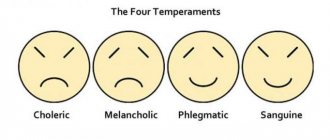The word “confrontation” is used quite often in modern society, however, not everyone knows the exact definition of this term. It is worth noting that the term “confrontation” has many shades of understanding. That is why it is worth turning to the traditional definition. Latin – confrontation, translated means “confrontation”. Based on this, we can say that confrontation is the opposition of certain life positions or personal opinions to an opponent. What types of confrontation are there? And what significance does it have for the development of society?
Confrontation is...
Imagine the situation: a husband and wife are sitting near the TV and arguing. The husband wants to watch football, and the wife wants to watch the series. This is the simplest example of a confrontation of opinions. Each spouse is convinced that his choice is the best, and the choice of his other half is not worthy of attention.
“Confrontation” translated from French (confrontation) is translated as “ opposition, confrontation .”
The concept of “confrontation” is used in various spheres of human activity - in everyday life, politics, military affairs and others, where there is a confrontation between something. In colloquial speech, the synonym “conflict” .
Compromise
Compromise occupies a middle place in the grid of conflict behavior. It means the disposition of the conflict participant(s) to resolve disagreements on the basis of mutual concessions and achieve partial satisfaction of their interests. This style equally involves active and passive actions, the application of individual and collective efforts. This style is preferable in that it usually blocks the path to ill will and allows, albeit partially, to satisfy the claims of each of the parties involved in the conflict. It is addressed in situations where:
- the subjects of the conflict are well aware of its causes and development in order to judge the actual circumstances, all the pros and cons of their own interests;
- conflicting parties of equal rank, having mutually exclusive interests, are aware of the need to come to terms with this state of affairs and balance of power, to be content with a temporary but suitable option for resolving contradictions;
- participants in the conflict of different ranks are inclined to reach an agreement in order to gain time and save energy, not to break off relations, and to avoid unnecessary losses;
- opponents, having assessed the current situation, adjust their goals taking into account the changes that have occurred during the conflict;
- all other styles of behavior in this conflict do not bring any effect.
The ability to compromise is a sign of realism and a high culture of communication, i.e.
a quality that is especially valued in management practice. However, one should not resort to it unnecessarily, rush to make compromise decisions, thereby interrupting a thorough discussion of a complex problem, and artificially reduce the time for a creative search for reasonable alternatives, optimal options. Each time you need to check whether a compromise is effective in a given case compared to, for example, cooperation, evasion or accommodation.
TAX PEOPLE ARE COMING TO YOU!
The editors of Clerk received information from sources in the Federal Tax Service that in 2022 tax authorities will begin to massively withdraw company expenses.
To prepare you for the difficult 2022, Clerk quickly developed a unique course on protection during tax audits . Sign up and receive a gift here .
At the end - a certificate of advanced training (with entry into the FIS FRDO). The program complies with the professional standard “Accountant” (see here) .
Confrontation in psychology
A person’s confrontational behavior can manifest itself in aggression, intolerance to the opinions of others, and opposition to one’s self.
Being in a position of confrontation, an individual tries to achieve his goals by all methods available to him: persuasion, using the dependent position of his opponent, official or other power. This is typical for violent confrontation.
Soft confrontation is also a confrontation of one’s self, but in more flexible ways. Convincing your opponent through constructive argumentation and the use of motivating factors.
In psychology, there is a special technique for resolving interpersonal problems called confrontation technique .
The essence of the technique: a specialist helps his client look at the problem from the other side (for example, from the opponent’s side), see the shortcomings and contradictions of his position, and then resolve the conflict situation based on his new vision.
Example : a woman came to see a psychologist who wanted to quit her job because, according to her, no one in the team respects her, doesn’t listen to her advice, doesn’t communicate.
The psychologist, after conducting a thorough survey, found out that the woman is very hot-tempered, always interrupts the interlocutor during a conversation, and evaluates her colleagues in an impartial manner.
The psychologist tactfully showed his client what communication with her looks like when viewed from the interlocutor’s perspective. Not immediately, but the client realized her shortcoming, and together with the psychologist she took the first steps to eliminate it.
Stages of development
The development of confrontation is divided into stages that have their own characteristic features. If you study the stages of development of confrontations that are accompanied by differences of opinion, you can easily find solutions to such situations. These stages of development of the situation are supported by the participants themselves, and unconsciously. The emotional attacks of the parties to the conflict depend on their preparedness.
Latent stage
Confrontation – in psychology this means confrontation. The emerging disagreements between the participants indicate a pre-conflict stage.
There are some factors that may indicate a confrontation is brewing:
- Misunderstandings arise between interlocutors, partners, and opponents. The process of transmitting information is disrupted, facts may be distorted.
- The environment leads to contradictions. For example, an authoritarian leadership style in organizations with pressure on the employee creates a negative environment. The lack of opportunity for open dialogue and constructive confrontation causes dissatisfaction.
- Character traits, differences in spiritual values among different people. Conflict arises between people who perceive the world around them and the situations in it differently.
These factors in themselves do not cause confrontation. But they set the stage for growing tension between the participants. When it occurs, the two sides easily move to the next stage of confrontation. At another stage it is more difficult to leave the discussion.
Confrontation
When both sides have a desire to prove that they are right, the conflict itself arises. This stage is characterized by increased tension and active expression of emotions.
Disagreements are obvious not only to the participants in the confrontation, but also to witnesses to the situation, if there are any.
Here confrontation is divided into 2 types, which were described above. Destructive confrontation implies an active flow of negative emotions, an attempt to limit the actions of the opposite side. Destructive conflict can include insults, humiliation and even violence.
Constructive conflict implies an active dialogue between participants, where everyone can express their opinion. Both sides have an interest in resolving the differences that have arisen. Active expression of emotions also takes place in this situation, but it is not negative.
At this stage of development of the confrontation, each participant needs to understand the essence of the problem that has arisen. To begin settlement, each opponent must clearly define his position.
Solution of a problem
The parties must focus their efforts on solving the problem.
Methods for resolving situations are:
- Compromises.
- Cooperation.
- Violence.
- Avoidance.
The first 2 methods are healthy ways to resolve conflict situations. When solving a problem, the parties take into account each other's wishes, trying to obtain benefits for everyone. Cooperation may imply that one of the parties will be in a less advantageous position, but in exchange for some actions of the opponent.
The last 2 methods are toxic. Avoiding conflict does not allow the problem to be solved; it can “pop up” at the most inopportune moment for the participants later. One or all participants in the confrontation accumulate negative emotions, which can later turn into aggression.
Violence is always toxic behavior. This includes manipulation, ignoring - all these are methods of psychological violence. Physical violence implies that the abuser in this situation does not know how to resolve conflict situations by going beyond limits. In this case, there should be no talk of solving problems. The main task of a person who has been physically abused is to cut off all contacts with the aggressor.
The ability to conduct a civilized open dialogue is the key to a successful resolution of confrontation. How people behave in situations will help eliminate the problem without going through all the steps.
Post-conflict stage
The confrontation ends. The parties sum up the results. Each participant determines for himself whether the expectations are justified. If the 2 parties were able to agree and calmly get out of the conflict, then such situations do not harm their relationship. If one of the parties remains in the red, then it retains a negative aftertaste, and emotions continue to accumulate. Such an outcome could be the beginning of a new conflict on the same basis. Information exchange will be disrupted, and the relationship between the parties may be terminated.
If you learn to distinguish the stages of development of confrontation, you can consciously approach the resolution of confrontations that arise between the parties. Participants will be able to rely not on emotions, but on common sense, which will help maintain relationships and find solutions to problems that will suit everyone.
Confrontation in family relationships
The more common sound is “conflict in family relationships.” But this does not change the essence. There are several types of family conflicts :
- classic . His scheme: quarreled → made peace. Such confrontation (within reasonable limits) usually does not harm family relationships;
- confrontation-tension. This is the burden of unresolved conflicts that “smolder” in the family for a long time. They may be open or hidden, but not resolved. This type of conflict can lead to the destruction of intrafamily ties;
- crisis (what is this?) . Such confrontation is characterized by high tension and often leads to the complete breakdown of the family (even if its members continue to live together).
Management methods
A healthy way out of confrontation can be considered the desire of the participants to reach a common solution to the problem. They are ready to hear the opposite point of view, and perhaps accept it.
In addition to adequate methods for resolving confrontation, there are negative methods that people unknowingly use.
Negotiation
Confrontation is a difference of opinion in psychology. Negotiations are a tactical technique that will allow you to find mutually acceptable solutions to the current situation.
For this method to work, certain conditions must be met:
- The parties to the confrontation are interdependent.
- There is no significant counterbalance between the powers and forces of the parties.
- The stage of development of confrontation must correspond to the possibility of negotiations. At the latent stage, it is easiest to move on to negotiations. If there was violence at the stage of solving the problem, then the probability of negotiations is close to 0. In case of a constructive conflict, it is necessary to start negotiations after emotions have been spilled out.
Avoiding conflict
This method refers to retaliatory-aggressive methods of managing confrontation.
But this method can be used in some situations:
- The topic of confrontation is banal and does not require a solution.
- There is a feeling that emotions are too intense and a “sobering up” of feelings is required.
- Bad time to discuss.
In other cases, avoidance of conflict occurs due to fear of the opponent. It is important to understand that avoiding confrontation does not always put an end to the issue that has arisen. Often the stressful situation returns after a while.
Concessions
This method is used if one of the parties during the discussion discovers that it is wrong. The method is also used if the party agrees that the subject of the collision is more important for the opponent. Or there is a need to reduce losses.
In this case, one of the parties remains in the minority on its own initiative.
The general algorithm for dealing with such situations is as follows:
- The parties acknowledge that there are differences.
- The possibility of negotiations is determined.
- The parties identify issues that arose during the process. There is an active discussion going on.
- Creation of solution options.
- Decision-making.
- The confrontation is over. The technique in psychology is the healthiest. This helps reduce damage and preserve the relationship between the parties.
Confrontation in military affairs
In this aspect (what does this mean?) the concept of “confrontation” is closest to the original interpretation.
This is a confrontation between the military forces of opponents. Sometimes confrontation has a direct meaning - in the case of open hostilities.
But still, the main meaning of military confrontation in the realities of today is an “absentia” confrontation between armies of potential opponents, a kind of “rattling” of weapons on both sides of the border.
A recent example of such confrontation is the escalation of differences between China and the United States.
When and why does it occur
From the classifications of confrontation, we can also identify the reasons why they arise.
4 groups of causes of confrontation:
- Socio-psychological.
- Personal.
- Organizational and managerial.
- Actually objective.
The last 2 groups are objective. The reasons for their occurrence include the conditions in which individuals interact. The environment creates a difference of opinion, a divergence of beliefs.
The subjective reasons for confrontation are related to the personal characteristics of the parties to the conflict. There are no specific reasons why confrontation occurs, as each situation is unique.
But we can highlight the most common causes of conflicts:
- There is a natural divergence of opinions regarding various situations, due to the fact that everyone perceives it through the prism of their own psyche.
- Divergence of spiritual values, material aspirations.
- Lifestyle of opponents.
- Stereotypes that were formed many years ago about interactions between people.
- Low level of emotional intelligence.
- An unprepared legal framework that would allow regulating human relationships.
Social confrontation
In a capitalist society (what is this?), regardless of the level of its economic development, there is a class stratification.
The standard of living of people belonging to different classes differs the more, the lower the economic level of development of society. This is the main motive for social confrontation.
The increase in social confrontation in society inevitably leads to a situation where “the lower classes do not want, and the upper classes cannot” exist like this any longer.
In this situation, there are 2 possible outcomes:
- revolution (political upheaval). Example: October Revolution in Russia in 1917;
- carrying out reforms (what is this?) designed to reduce social confrontation in society.
Examples from life
So, a permanent localized civil war, a conflict, is developing in your home. Everyone is fighting against everyone, the mother comes home from work exhausted and immediately from the doorway loudly rages about what she saw in the house, her teenage son gets paid for scattered shoes, unfinished homework, a mess in the room - this is an open tough confrontation.
In turn, the teenager is silent, frowning, quietly retreating to his territory, but fundamentally disagrees with his mother, he has his own understanding of the order, the place of shoes/socks/books, and he is not going to change anything - this is a hidden confrontation.
At the moment when the confrontation reaches a dead end, the husband appears in the arena of hostilities, he does not go wild, because he has already managed to relieve tension before coming home: “Darling, my colleagues and I only have a glass of beer...”. The wife abruptly switches from the teenager to the husband, continuing to openly confront the next enemy, the husband gently and affectionately persuades her to stop screaming, promises that if the outcome he desires, this will not happen again, he will come home from work on time and bring the entire salary - this is soft confrontation.
The same can apply to work or relationships with neighbors. Have you ever looked into the eyes of your immediate supervisor when you are late for work or miss a deadline, even if he is silent, his eyes promise you hell on earth during your lifetime. But try turning on your favorite music at full volume on a beautiful Sunday morning at 7 o’clock and you will get all kinds of confrontations depending on the character of your neighbors.
Political confrontation
The globalization of the world order (how is that?) allows us to talk not about political, but about geopolitical confrontation.
This means that confrontation does not exist between people, parties or even social classes, but between political systems .
In the recent past (since the middle of the last century), the most striking example of geopolitical confrontation is the so-called “ Cold War ”.
Select the city closest to you
Moscow
St. Petersburg
Aachen Abakan Aban Avimor Alma-Ata Almaty Alushta Amsterdam Anapa Antalya Apsheronsk Armavir Arkhangelsk Astana Astrakhan Athens Baku Balakovo Balashikha Balashov Bangkok Baranovichi Barnaul Barcelona Belgorod Belombre Berdsk Biysk Blagoveshchensk Blagoveshchensk (Amur region) Borisogleb SK Bratsk Brno Bryansk Budapest Budennovsk Burgas Bushtyna Varna Vienna Vidnoye Vitebsk Vladivostok Vladikavkaz Vladimir Volgograd Volgodonsk Volzhsky Vologda Volchikha Voronezh Voskresensk Votkinsk Gelendzhik Georgievsk Gomel Goryachy Klyuch Denver Jacksonville Dinskaya Dmitrov Dnepropetrovsk Dolgoprudny Domodedovo Donetsk Dorogobuzh Dresden Yekaterinburg Essentuki Zheleznogorsk Zheleznodorozhny Zhi Tomir Zhukovsky Zaporozhye Zvenigorodka Zelenograd Zimovniki Ivanovo Jerusalem Izhevsk Irkutsk Yoshkar-Ola Kazan Kalach-na -Don Kaliningrad Kaluga Kamensk-Uralsky Kandalaksha Kemerovo Kerch Kiev Kineshma Kirov Kirovograd Chisinau Klimovsk Kovrov Kolomna Komsomolsk-on-Amur Korolev Kostanay Kotka Krasnoarmeysk Krasnogorsk Krasnodar Krasnoyarsk Kremenchug Krivoy Rog Kuznetsk Kurgan Kursk Lazarevskoye Leninsk-Kuznetsky Lesnoy Liman Lipetsk Lisichansk Liski Lobnya London Lugansk Lutsk Lviv Lyubertsy Magnitogorsk Manchester Manganese Morocco Marseille Makhachkala Megion Melitopol Menzelinsk Miass Millerovo Mineral Waters Minsk Minusinsk Mogilev Mozhaisk Moscow Murmansk Mtsensk Mytishchi Naberezhnye Chelny Nazarovo Nalchik Nakhabino Nakhodka Not specified Nefteyugansk Nizhnevartovsk Nizhnekamsk Nizhny Novgorod Nikolaev Nice Novokuznetsk Novorossiysk Novosibirsk Novouzensk Novocherkassk Novoshakhtinsk Noginsk New York Obninsk Odessa Odintsovo Omsk Orel Orenburg Orekhovo-Zuevo Pavlograd Paris Penza Perm Petrozavodsk Podolsk Polotsk Prague Protvino Pskov Pushkin Pushkin Pyatigorsk Ramenskoye Revda Reutov Riga Rostov-on-Don Rybinsk Ryazan Salavat Salsk Samara San Mateo St. Petersburg Saransk Saratov Svatovo Sevastopol Severodvinsk Semipalatinsk Sergiev Posad Serpukhov Simferopol Smela Smolensk Soligorsk Sosnovy Bor Sochi Stavropol Stary Oskol Sterlitamak Stupino Sumy Syktyvkar Tambov Tashkent Tbilisi Tver Tel Aviv Timashevsk Tiraspol Tikhvin Tikhoretsk Togliatti Tomsk Toronto Tuapse Tuymazy Tula Tyumen Uzhgorod Ulan-Ude Ulyanovsk Usolye-Sibirskoye Ussuriysk Ust-Kut U fa Ukhta Frankfurt am Main Frolovo Khabarovsk Haifa Kharkov Helsinki Kherson Khimki Khmelnitsky Zurich Chara Cheboksary Chelyabinsk Cherepovets Chita Mines Shymkent Shchelkovo Elektrostal Engels Yalta Yamalo-Nenets Autonomous Okrug Pravokhettinsky Yaroslavl Yartsevo Yasinovataya










